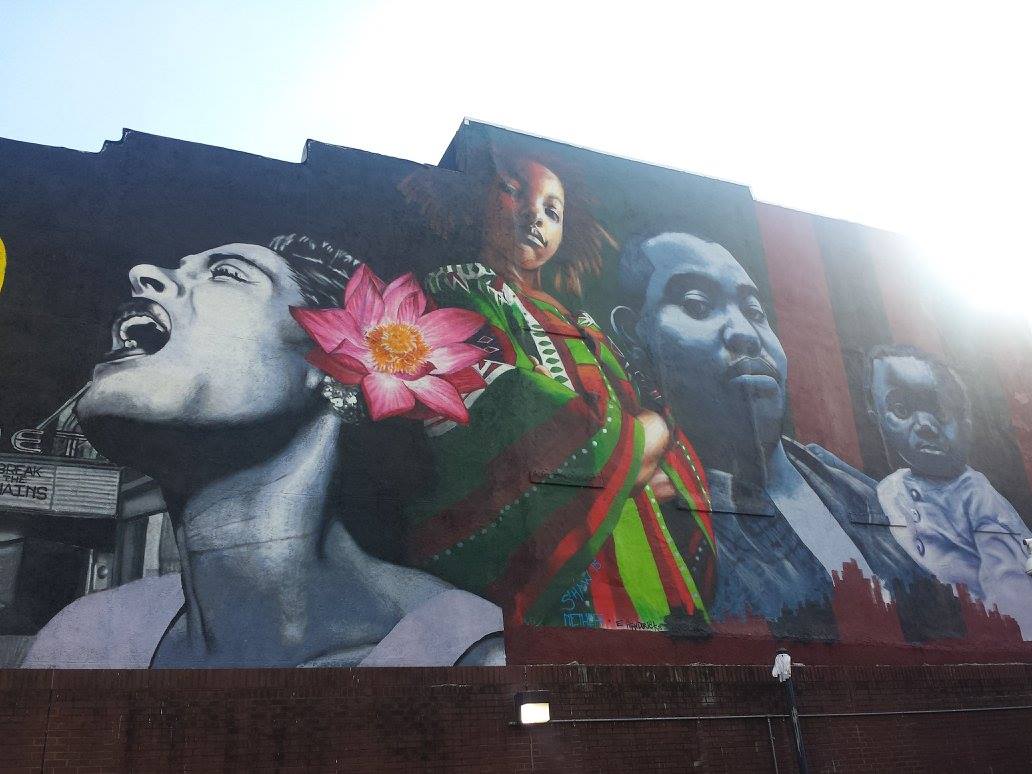Jan Razauskas’ Carbon Drawings at MICA’s Pinkard Gallery by Terence Hannum
There’s a certain funky rhythm to the work in Jan Razauskas’ Carbon Drawings up at MICA’s Pinkard Gallery. Irregular rectilinear forms repeat, interrupt each other and extend themselves over backdrops of gray gradients made from carbon paper residue over twenty-five pieces.
Black lines of tightly sliced carbon paper reverberate through out each of these small pages. Angular forms and materials harken towards architecture but also firmly plant themselves in both collage and a tradition of abstraction. These are maps to dissected grids and strata intended to guide us to structures that are constantly broken, reformed, and remixed.

In Carbon X04 Razauskas uses displacement to her advantage. This piece is like viewing the exterior of a blueprint through a grayscale prism. We see outlines of white where no carbon residue was engaged, set against a cadence of black forms all interwoven with a gradation of gray carbon dust, that combined form akin to an elaborate score for abstract electronic music.
The potential for carbon paper as a formal and metaphorical device is massive. It comes as quite a shock that very few artists have put it to use. I am reminded primarily of the work of Dorothea Rockburne and how she would fold and collage geometric forms with carbon paper. Occasionally a line would be drawn through the carbon paper transferring a line but more importantly that they would age and fade, they would go from black to purple. Time became a drawing element. There are certainly other artists like Latifa Echakhch with her installations using walls of carbon paper, Anna Gray and Ryan Wilson Paulsen with entire books bound with carbon paper, or mail artist Clemente Padin, but carbon is not by any means a popular fine art medium.
 Carbon 40
Carbon 40
There is much justification for anchoring these pieces in the tradition of architectural rendering in this exhibit. The blueprint paper associated with the history of that discipline used a similar process of transference before becoming obsolete. Works like Carbon 20 almost establish a sense of perspective in the way the white ground of the paper and pitch black of the tight sliced carbon paper almost make depicted columns recede. It is rather the background of carbon residue being built into a steady rhythmic set of layers that breaks the illusion. Each layer is evenly spaced and placed, this further displaces the column like structures allowing them to hover; the ground has no ground.
Carbon is the essential material for life and even though we exist in an era set fast on discarding extraneous media for the electronic through receipts, letters, and other prints, carbon still enters our life. Think about it: perhaps you were pained to write a check on some rare occasion or even a point of sale receipt from a small shop. Perhaps you braved a line at the United States Postal Service, FedEx, or DHL to ship a package and had to get something in triplicate. Carbon is a material we haven’t been able to do away with quite yet.
 Carbon 33
Carbon 33
None of the works quite get to the heart of the exhibition quite like Carbon 33. If the function of carbon paper is to generate a trace, we see that effect most clearly. In the background is a slow scan gradient of gray that goes off frame, almost hinting that the action is bigger than what we see beyond the edge. Then on top, a black form of precisely cut carbon paper casts a white shadow.
An accompanying essay by architect Fred Scharmen introduces semiotics into the conversation but doesn’t quite link to the concept of the tracing in this work. We definitely get the fragment, and it is clear how that relates to these collages and as a practice in general. However, something that Jacques Derrida expands on in this tradition is that the trace is the thing that cannot be escaped when a fragment is formed. That while language, and for our purposes here visual language, and meaning are fragmentary, word or image always arrives with a trace of its past. Carbon 33 illustrates the power of the trace: its white ground of the paper now acts as a shadow to a cut irregular black form.
 Carbon 43
Carbon 43
As a whole exhibit, Carbon Drawings functions as an index of architectural dissection. This is a massive series on the variations of placement and investigation into material that seems as if it could be infinite for Jan Razauskas.
We find shifts and upheavals, gradations and breaks in what is an important jumping off point for her body of work. In previous abstract paintings, certain forms would dominate over others in an exercise of layering with paint. But in this exhibition we see a decisiveness brought on by the narrow focus of the medium and limitation of means that arrives clear eyed and curious.
Author Terence Hannum is a Baltimore based visual artist and musician who performs solo, with the avant-metal band Locrian (Relapse Records) and the dark synthpop duo The Holy Circle. Hannum is an Assitant Professor of Art at Stevenson University. He has had solo exhibitions at Guest Spot (Baltimore), Western Exhibitions (Chicago, IL), Stevenson University, Museum of Contemporary Art, Chicago, Gallery 400 at UIC (Chicago, IL). And in group shows at TSA (Brooklyn, NY), sophiajacob (Baltimore, MD), Allegra La Viola (NYC), City Ice Arts (Kansas City, MO) & Jonathan Ferrara Gallery (New Orleans, LA).





















